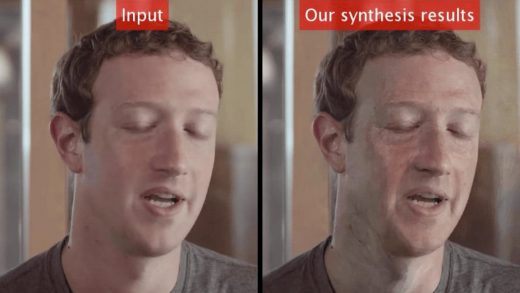What old Zuckerberg looks like, according to a new AI tool for aging faces
Aging is a natural process inflicted on all of us humans. With AI, we can get a glimpse ahead of time of what the future holds for our wrinkles, age spots, and sagging skin.
A new machine learning paper shows how AI can take footage of someone and duplicate the video with the subject looking an age the researchers specify. The team behind the paper, from the University of Arkansas, Clemson University, Carnegie Mellon University, and Concordia University in Canada, claim that this is one of the first methods to use AI to tackle aging in videos.
The system was trained on an expanded dataset of photos of showing individuals at different ages. Reinforcement learning, a technique that rewards an AI model for getting a task correct, comes into play by rewarding the system when the synthesized features, like wrinkles, appear similarly across consecutive video frames. Similar approaches power the “deepfake” technology that has raised alarms about the prospect of AI-powered video propaganda.
Clips showing celebrity examples show how close to reality the system can get. Running footage of Donald Trump in the 1980s through the model creates a video of an older Trump that is remarkably similar to the actual man, including the hair, which maintains its youthful glory.
In another clip, an AI-aged Arnold Schwarzenegger, Bill Gates, Anthony Hopkins, and French actor Alain Delon achieve varying levels of success. Other footage showing Mark Zuckerberg is harder to judge of course, since he hasn’t aged much in real life. But—and this may be a reflection of a particularly tough year for Facebook—it was still convincing.
The paper, titled “Automatic Face Aging in Videos via Deep Reinforcement Learning,” was recently accepted at this year’s Conference on Computer Vision and Pattern Recognition (CVPR), one of the most prestigious conferences in AI.
Hollywood, which has a long history of unconvincing aging in movies, would obviously be one possible user of this technology. Khoa Luu, one of the co-authors of the paper, said in an email that he has also received some interest and questions from police departments who think that this technology could help in missing children cases.
Understanding faces that have been changed by time or by other guises—and detecting them—is a major research concern in AI. Other recent papers include “On Matching Faces with Alterations due to Plastic Surgery and Disguise,” which the authors argue are two of the bigger challenges to face recognition. Another paper from 2017 uses a generative adversarial network, also known as a GAN, to estimate what people might look like older or younger.
Before AI-powered surveillance technology gets too powerful, however, there are legal and ethical concerns. Microsoft’s president, Brad Smith, has called for the U.S. government to start regulating face recognition technology and limiting where it can be deployed (although he hasn’t supported calls by some privacy advocates for a broader moratorium). Meanwhile, Congress and several U.S. states are now considering passing legislation against AI-altered videos and audio.
But the march to using our faces as identification or used against us in constant surveillance systems has already started. Face recognition is becoming part of the airport experience, and police departments around the country are trying out similar software, despite pushback. The technology needs more public debate and policy before additional wrinkles like synthetic aging software can be added to the mix.
(43)



